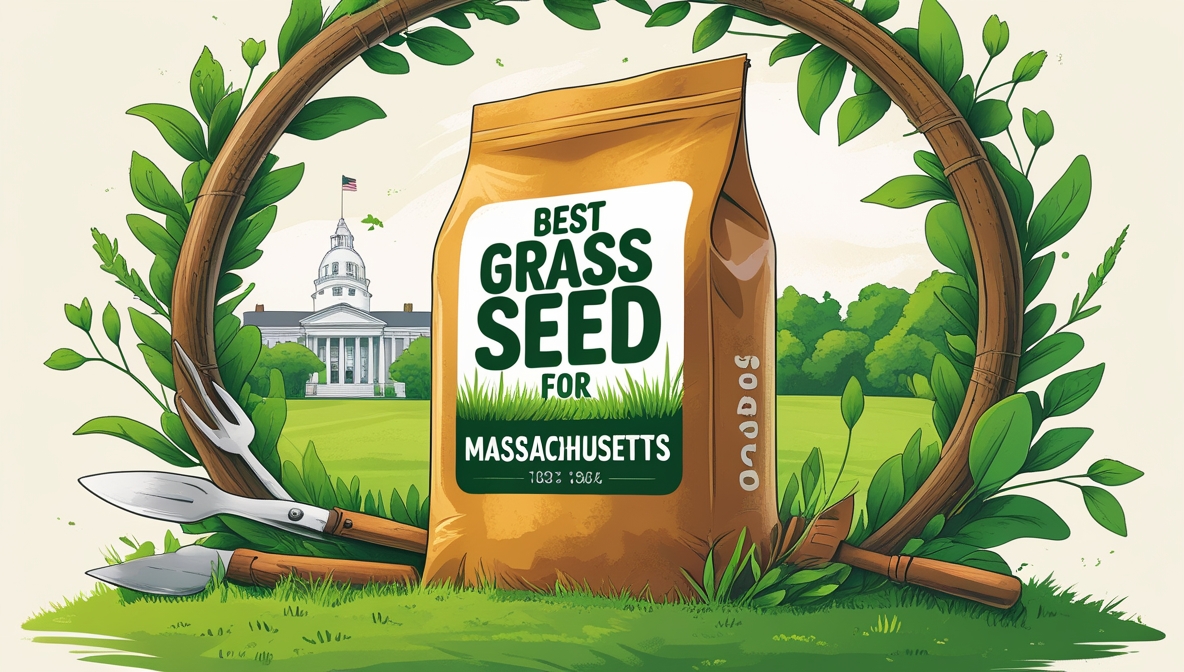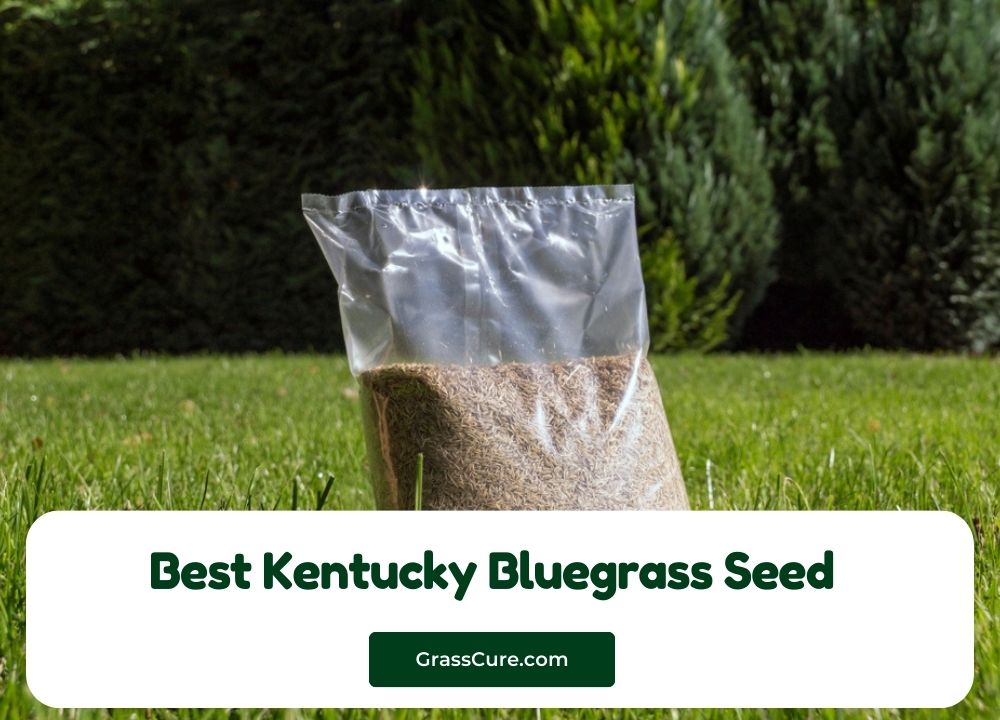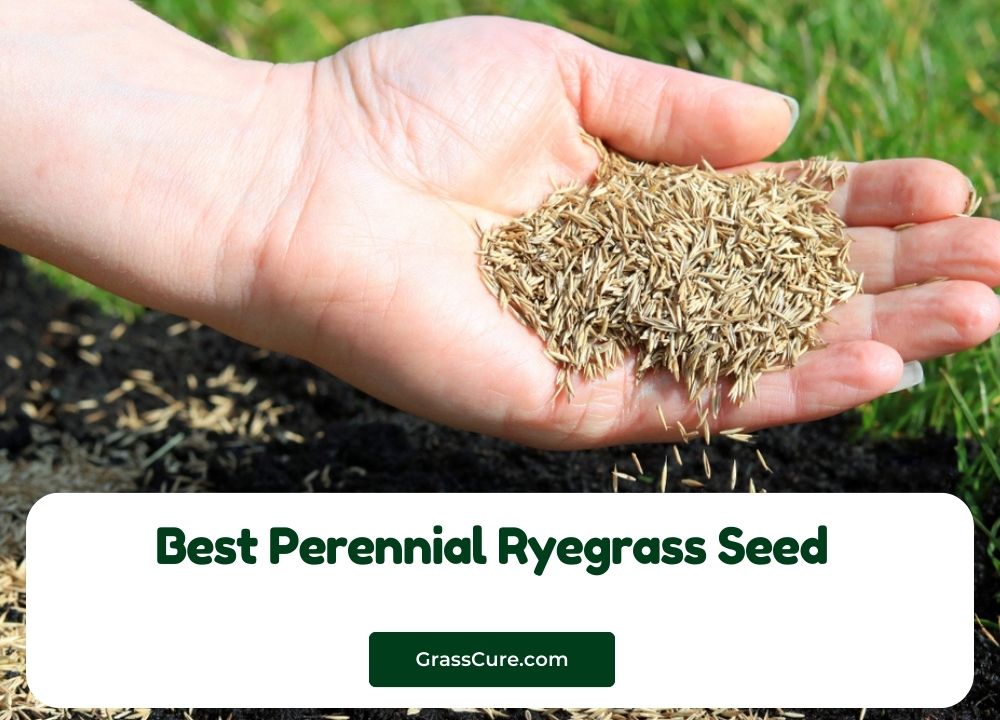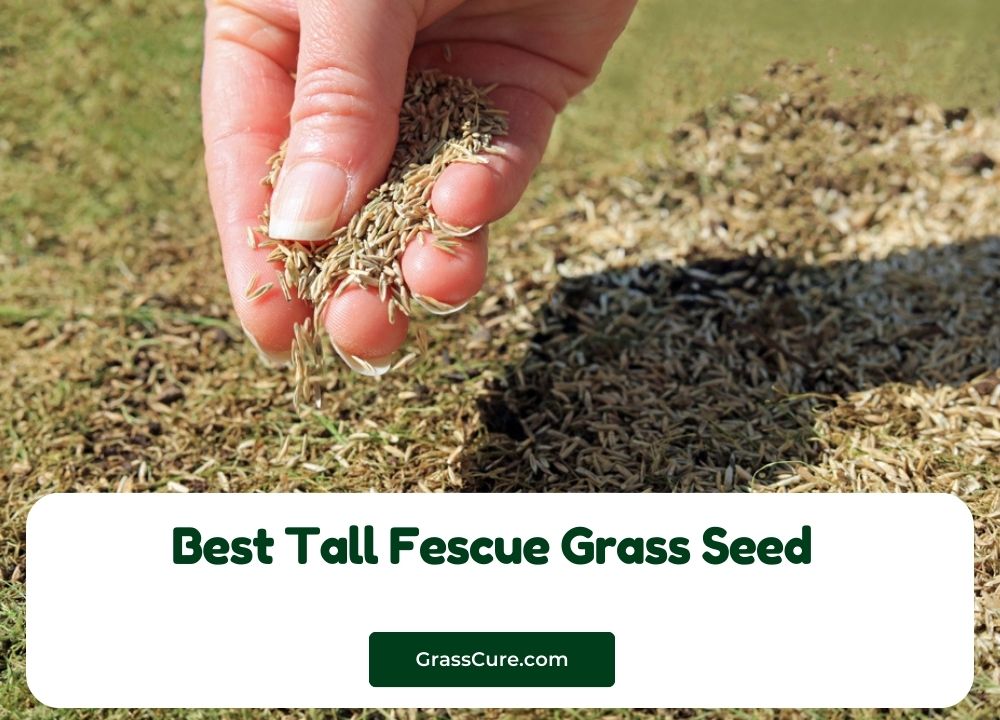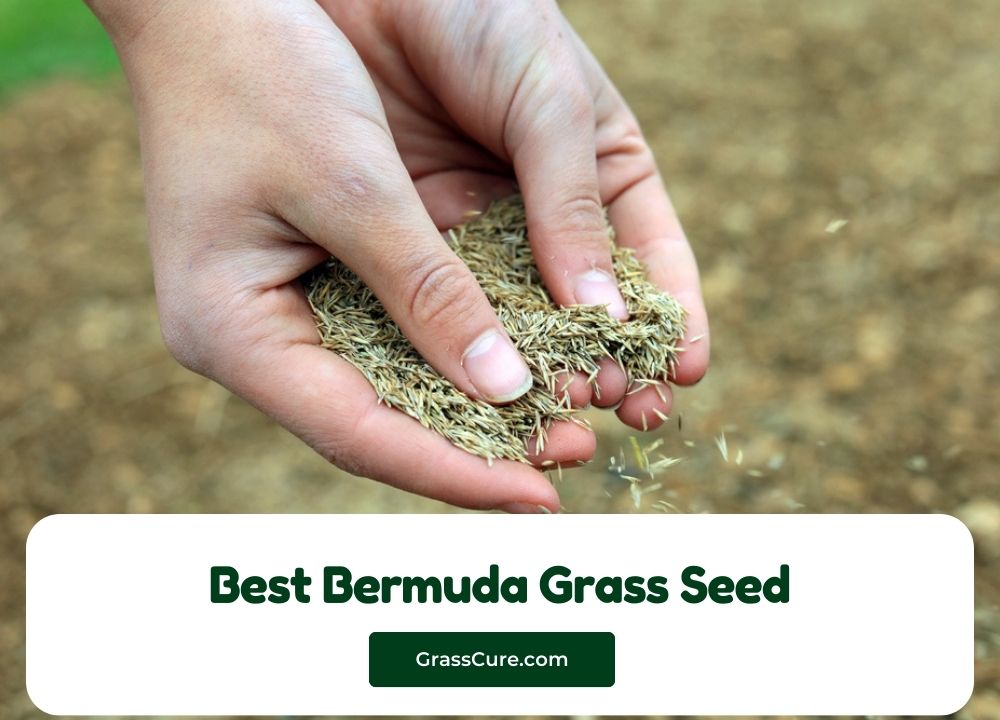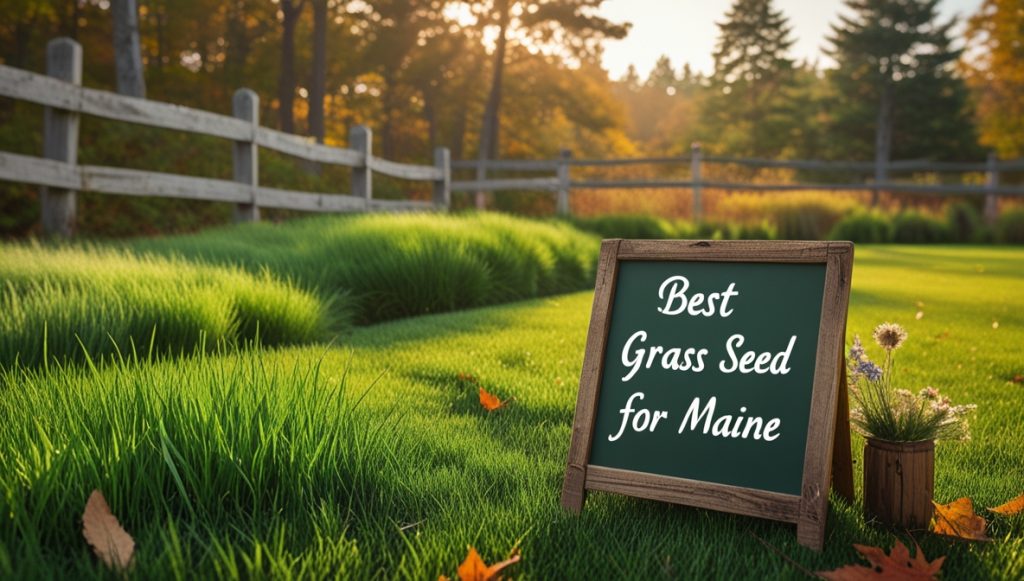When it comes to creating a lush, green lawn in Massachusetts, choosing the right grass seed is essential. The Bay State’s climate, characterized by cold winters, humid summers, and a relatively short growing season, presents unique challenges for homeowners and gardeners. Selecting a grass seed that thrives in these conditions while meeting your lawn’s specific needs—whether it’s shade tolerance, drought resistance, or low maintenance—can make all the difference. In this comprehensive guide, we’ll explore the best grass seed options for Massachusetts, factors to consider when choosing, and tips for maintaining a healthy lawn year-round.
Contents
Understanding Massachusetts’ Climate and Soil
Massachusetts falls within USDA Hardiness Zones 5a to 7a, depending on the region. Coastal areas like Cape Cod tend to be milder, while western parts of the state, such as the Berkshires, experience harsher winters. The state’s climate is classified as humid continental, with average summer temperatures ranging from 70°F to 85°F and winter lows dipping below freezing, often accompanied by heavy snowfall. Spring and fall are transitional seasons, offering cool, moist conditions ideal for grass growth.
Soil types in Massachusetts vary widely. Eastern regions often have sandy, well-draining soils, while central and western areas may feature loam or clay-heavy soils. Testing your soil’s pH—ideally between 6.0 and 7.0 for most grasses—and addressing drainage issues can help determine the best seed for your lawn. Cool-season grasses dominate in Massachusetts due to the state’s temperature fluctuations, making them the go-to choice for most homeowners.
Top Grass Seed Choices for Massachusetts
- Kentucky Bluegrass
- Why It’s Great: Kentucky bluegrass is a classic cool-season grass known for its rich, dark green color and dense, carpet-like texture. It thrives in Massachusetts’ cool springs and falls, recovering well from winter dormancy.
- Pros: Excellent cold tolerance, self-repairing via rhizomes, and a soft feel underfoot.
- Cons: Requires full sun (at least 6 hours daily) and moderate to high maintenance, including regular watering and fertilization. It struggles in heavy shade or drought conditions.
- Best For: Sunny lawns in suburban or rural areas where aesthetics are a priority.
- Fine Fescue
- Why It’s Great: Fine fescue, including varieties like creeping red, Chewings, and hard fescue, is a low-maintenance, shade-tolerant option perfect for Massachusetts’ variable landscapes. It’s drought-resistant and adapts to poor soils.
- Pros: Low fertilizer and mowing needs, excellent shade tolerance, and fine texture.
- Cons: Less durable under heavy foot traffic and may thin out in full sun without proper care.
- Best For: Shaded yards, wooded properties, or low-traffic areas like vacation homes.
- Tall Fescue
- Why It’s Great: Tall fescue is a versatile, deep-rooted grass that handles Massachusetts’ summer heat and occasional droughts better than other cool-season grasses. It’s also disease-resistant and durable.
- Pros: Drought tolerance, adaptability to various soils, and moderate shade tolerance.
- Cons: Coarser texture than Kentucky bluegrass and doesn’t spread naturally, requiring overseeding for bare spots.
- Best For: High-traffic lawns, such as those with kids or pets, and areas with partial shade.
- Perennial Ryegrass
- Why It’s Great: Known for quick germination (5-10 days), perennial ryegrass establishes fast, making it ideal for overseeding or repairing damaged lawns in Massachusetts’ short growing windows.
- Pros: Rapid growth, fine texture, and good wear tolerance.
- Cons: Less cold-hardy than Kentucky bluegrass and may struggle in extreme winters or poorly drained soils.
- Best For: Quick fixes, mixed seed blends, or lawns needing temporary coverage before a permanent solution.
- Seed Mixtures
- Why It’s Great: Combining grasses like Kentucky bluegrass, fine fescue, and perennial ryegrass offers a balanced approach, leveraging the strengths of each species. Many commercial blends are tailored for New England conditions.
- Pros: Versatility, improved resilience, and coverage for mixed sun/shade areas.
- Cons: Maintenance needs vary by species, and weaker performers may thin out over time.
- Best For: Most Massachusetts lawns, especially those with diverse light and soil conditions.
Factors to Consider When Choosing Grass Seed
- Sunlight: Assess how much sun your lawn gets daily. Kentucky bluegrass and perennial ryegrass prefer full sun, while fine fescue excels in shade. Tall fescue and mixtures offer middle-ground options.
- Traffic: High-traffic lawns benefit from durable grasses like tall fescue or perennial ryegrass, while ornamental lawns can thrive with Kentucky bluegrass or fine fescue.
- Maintenance: If you prefer a low-effort lawn, fine fescue or tall fescue requires less mowing and fertilizing. Kentucky bluegrass demands more care for its pristine look.
- Soil and Water: Sandy soils need drought-tolerant seeds like tall fescue, while clay soils may favor Kentucky bluegrass with proper drainage. Ensure irrigation matches the grass’s needs.
Planting and Maintenance Tips
The best time to plant grass seed in Massachusetts is late summer to early fall (August to mid-October), when soil temperatures are warm, and cooler air reduces stress on seedlings. Spring (April to June) is a secondary option, though summer heat can challenge young grass.
- Preparation: Clear debris, aerate compacted soil, and amend with compost or topsoil as needed. Apply a starter fertilizer with a 10-20-10 NPK ratio to boost root growth.
- Seeding: Spread seed evenly using a broadcast spreader at the recommended rate (e.g., 6-8 lbs per 1,000 sq ft for Kentucky bluegrass). Lightly rake to ensure soil contact, then water gently.
- Watering: Keep soil consistently moist (not soggy) for 2-3 weeks during germination. Once established, water deeply but infrequently—about 1 inch per week, adjusting for rainfall.
- Mowing: Wait until grass reaches 3-4 inches before the first mow, cutting no more than one-third of the blade height. Maintain a height of 2.5-3.5 inches for most cool-season grasses.
- Fertilizing: Apply a balanced fertilizer (e.g., 10-10-10) in fall and spring. Avoid over-fertilizing, which can burn grass or encourage weeds.
- Weed Control: Use pre-emergent herbicides in spring to prevent crabgrass, and spot-treat broadleaf weeds as needed. Healthy, dense grass naturally crowds out invaders.
Recommended Products
- Pennington Smart Seed Kentucky Bluegrass Mix: Enhanced with fertilizer for quick establishment and drought resistance.
- Jonathan Green Black Beauty Tall Fescue: A premium blend with deep roots and excellent heat tolerance.
- Scotts Turf Builder Fine Fescue Mix: Ideal for shaded lawns with a low-maintenance profile.
- Barenbrug Perennial Ryegrass Seed: Fast-growing and durable, perfect for overseeding.
Local Considerations
Massachusetts’ coastal regions, like Plymouth or Barnstable, may experience salt spray from winter storms or ocean breezes. Fine fescue and tall fescue tolerate salt better than Kentucky bluegrass. In urban areas like Boston, small lawns with partial shade benefit from mixtures or fine fescue. Western Massachusetts’ colder microclimates favor cold-hardy options like Kentucky bluegrass or tall fescue blends.
Conclusion
The best grass seed for Massachusetts depends on your lawn’s unique conditions and your goals as a homeowner. Kentucky bluegrass offers timeless beauty for sunny yards, fine fescue suits shaded retreats, tall fescue handles wear and tear, and perennial ryegrass provides quick results. For most lawns, a tailored seed mixture ensures resilience and coverage. By understanding your climate, soil, and usage needs, and following proper planting and care practices, you can cultivate a vibrant lawn that enhances your property year-round. Whether you’re in the rolling hills of the Berkshires or the sandy shores of Cape Cod, the right grass seed is your first step to lawn success.
